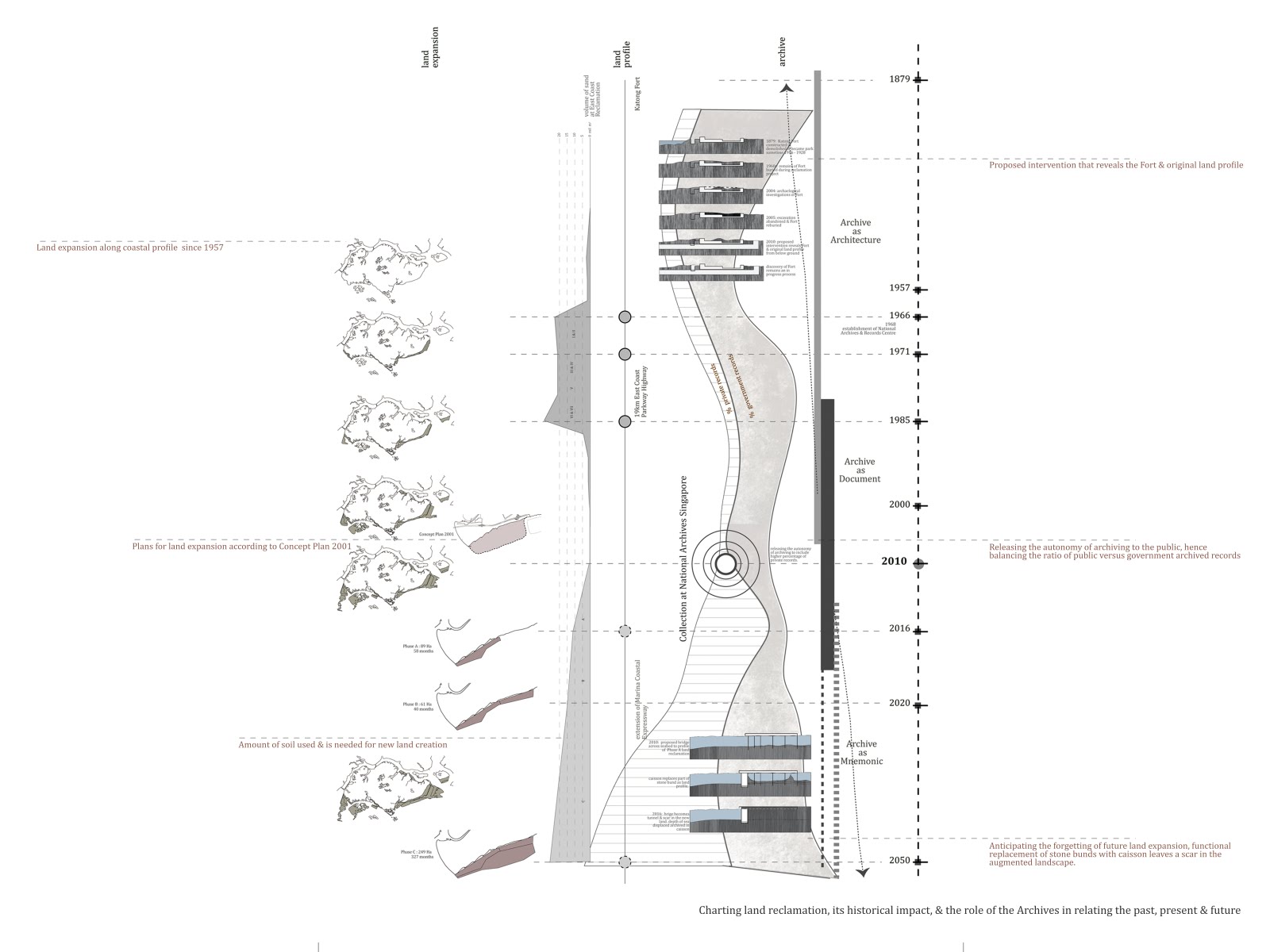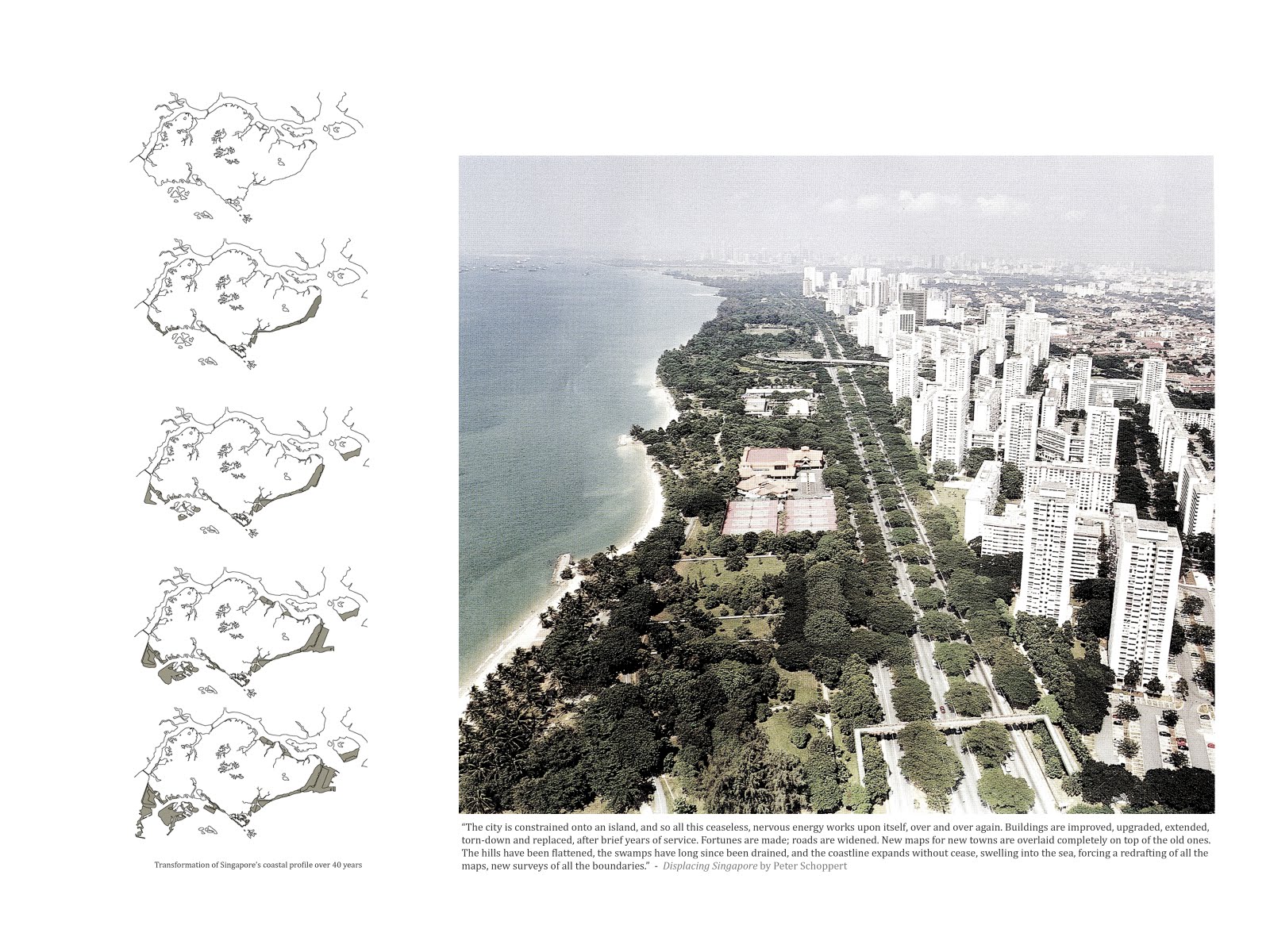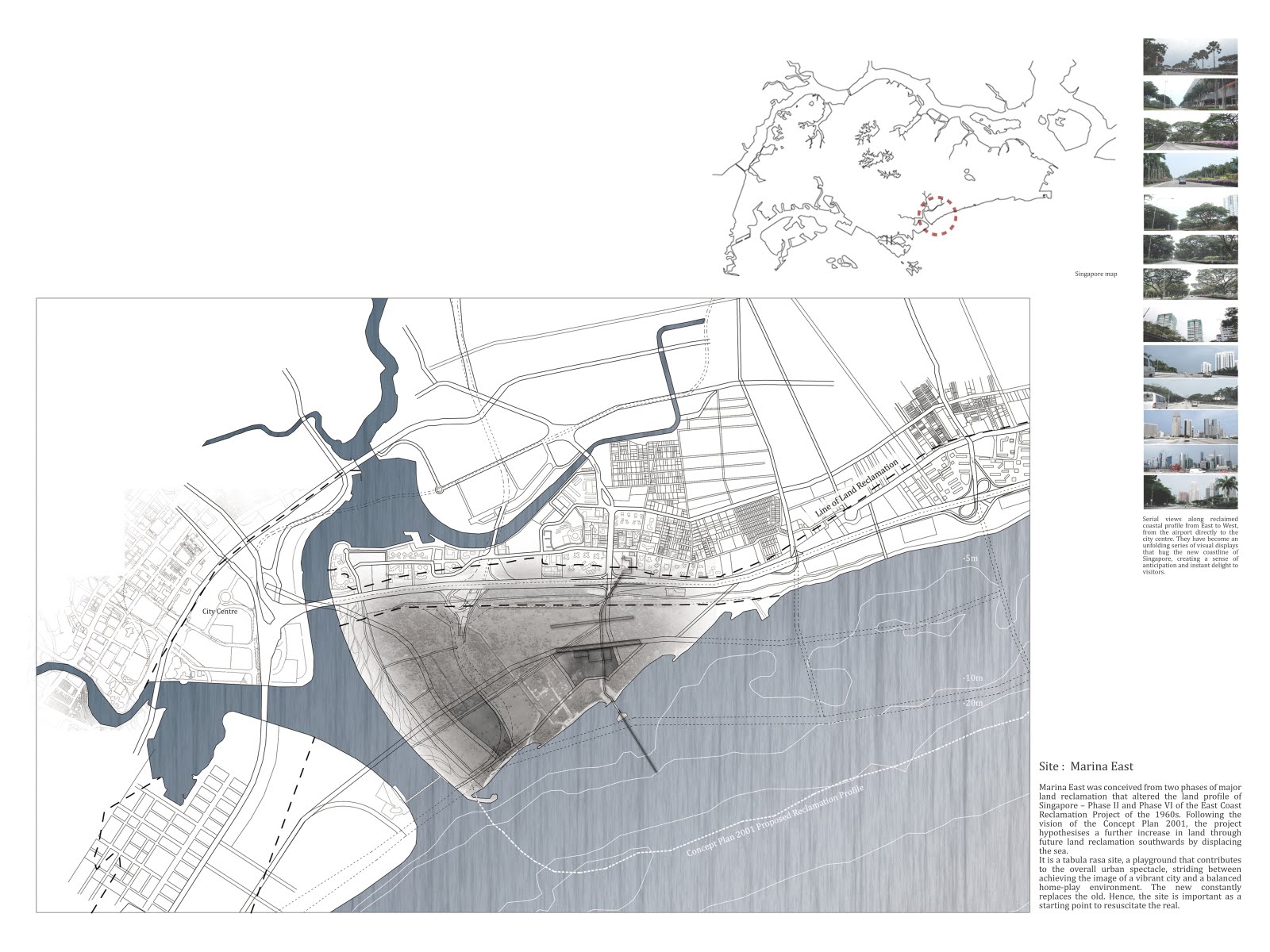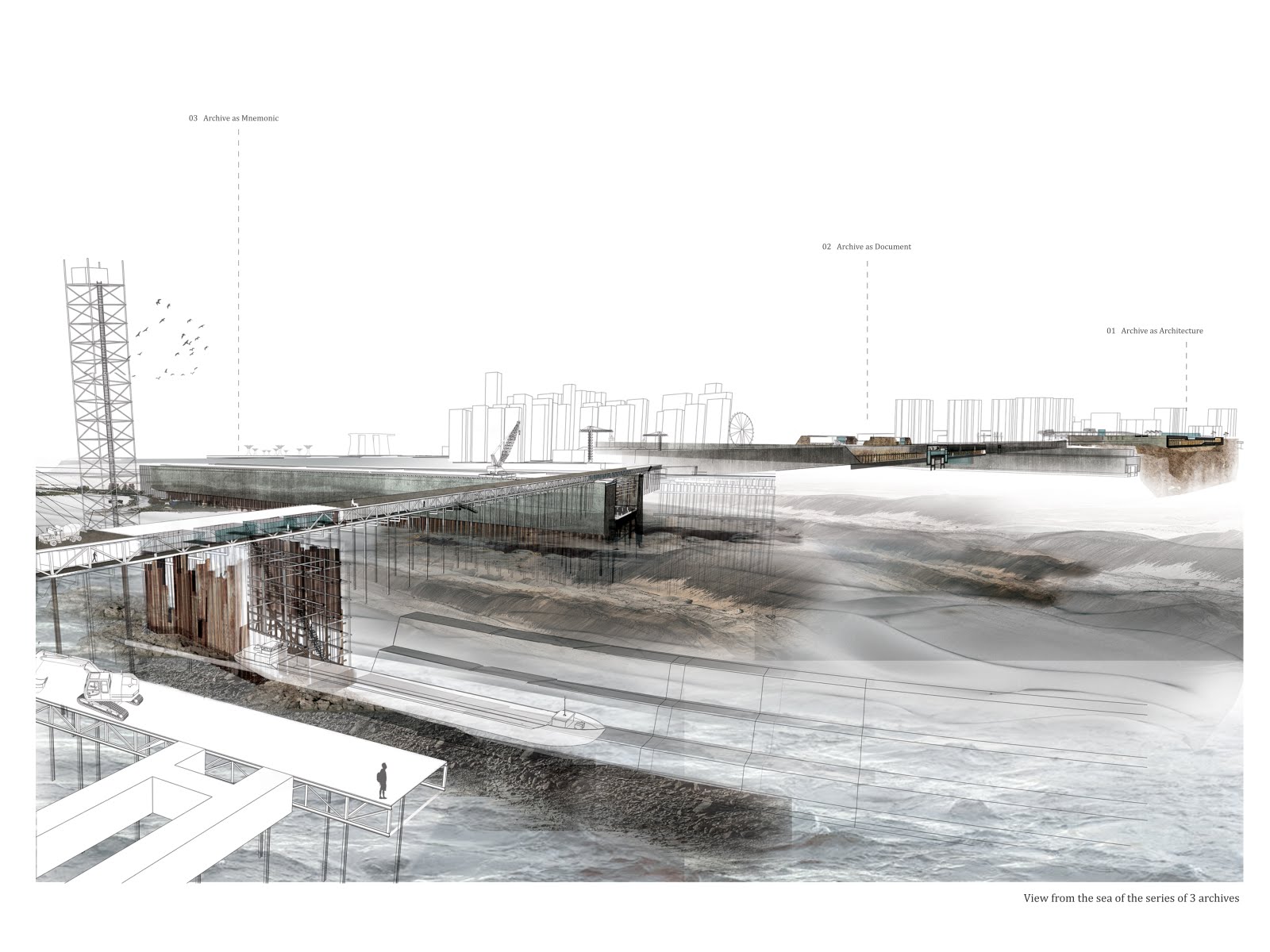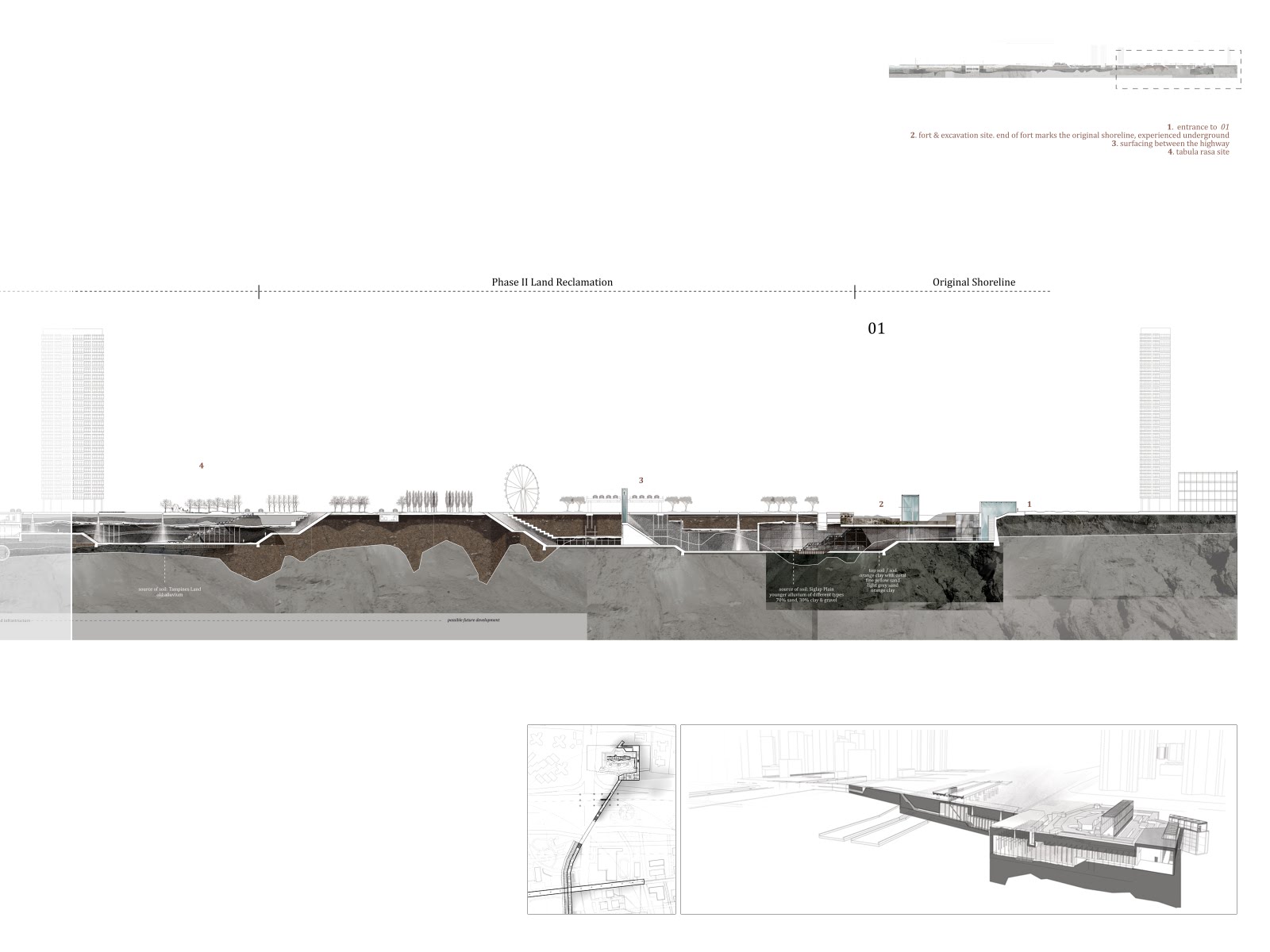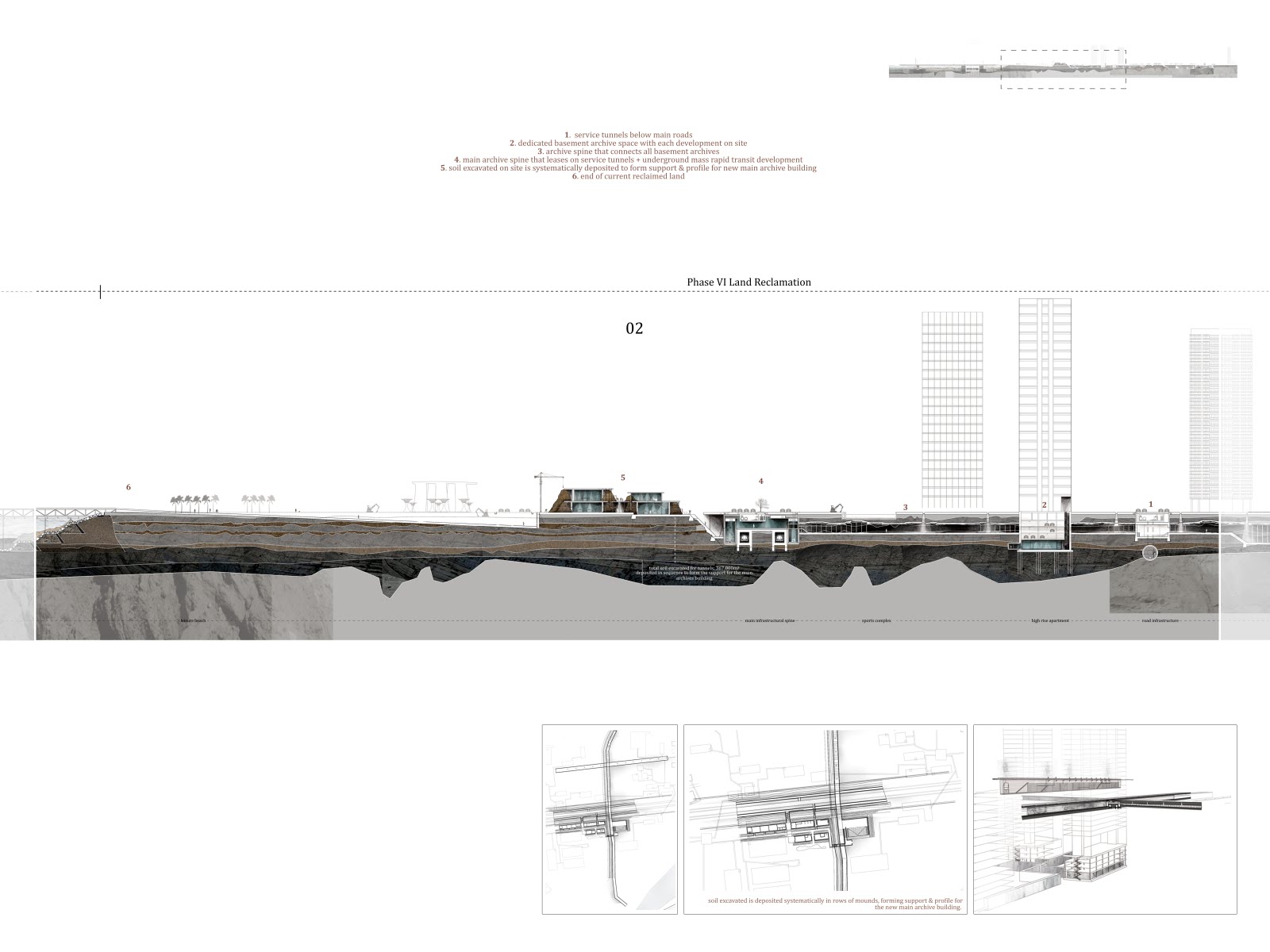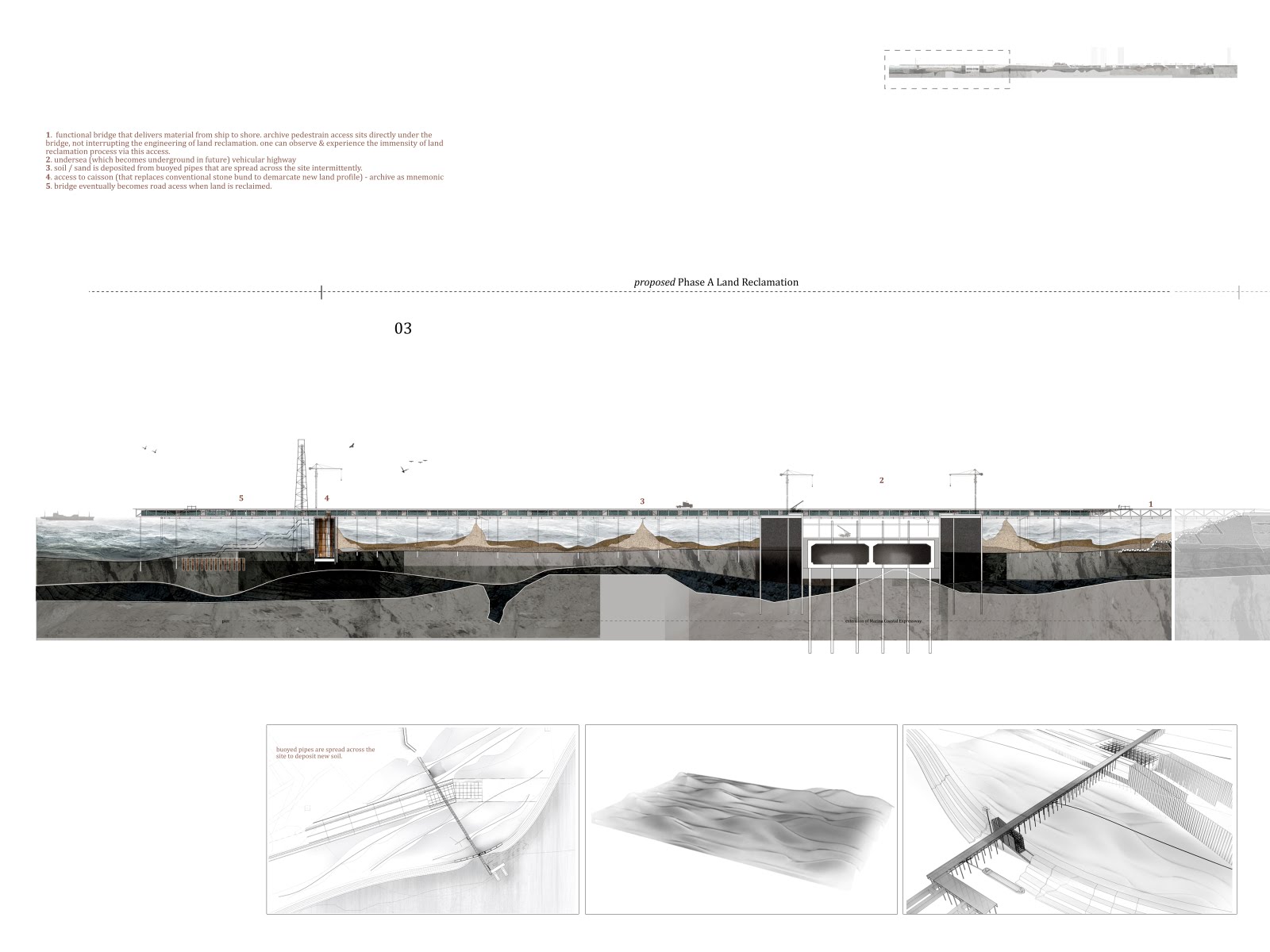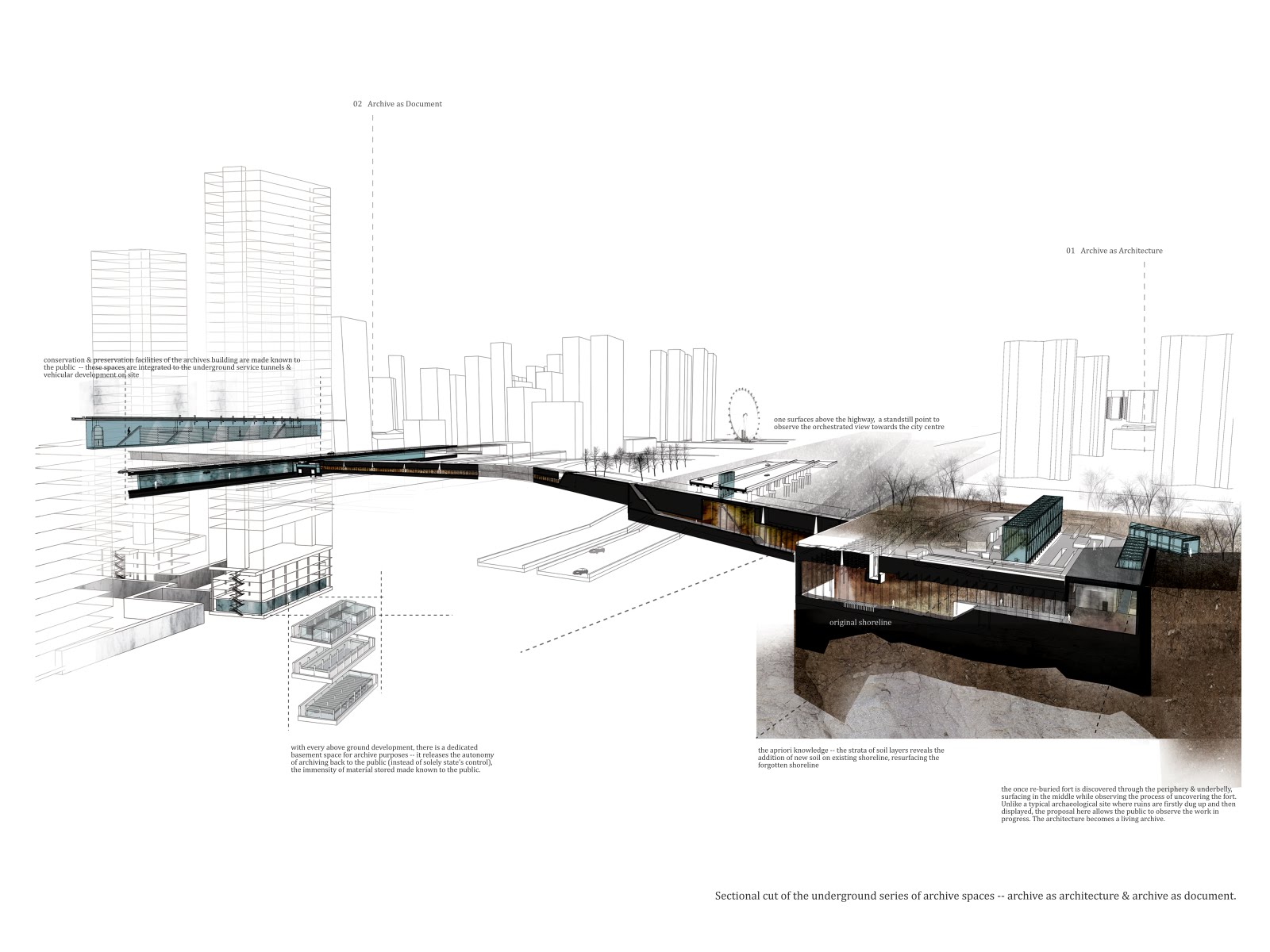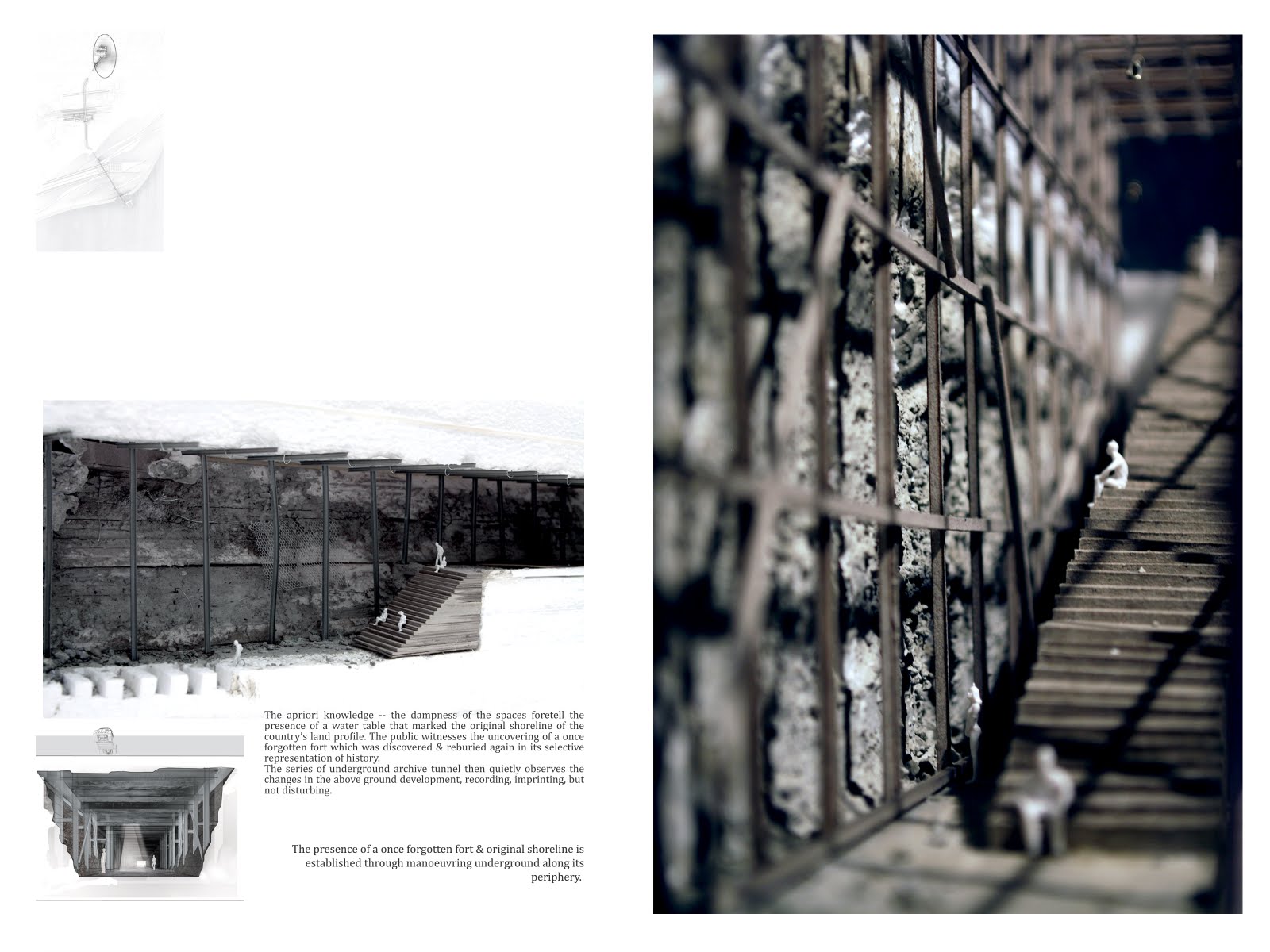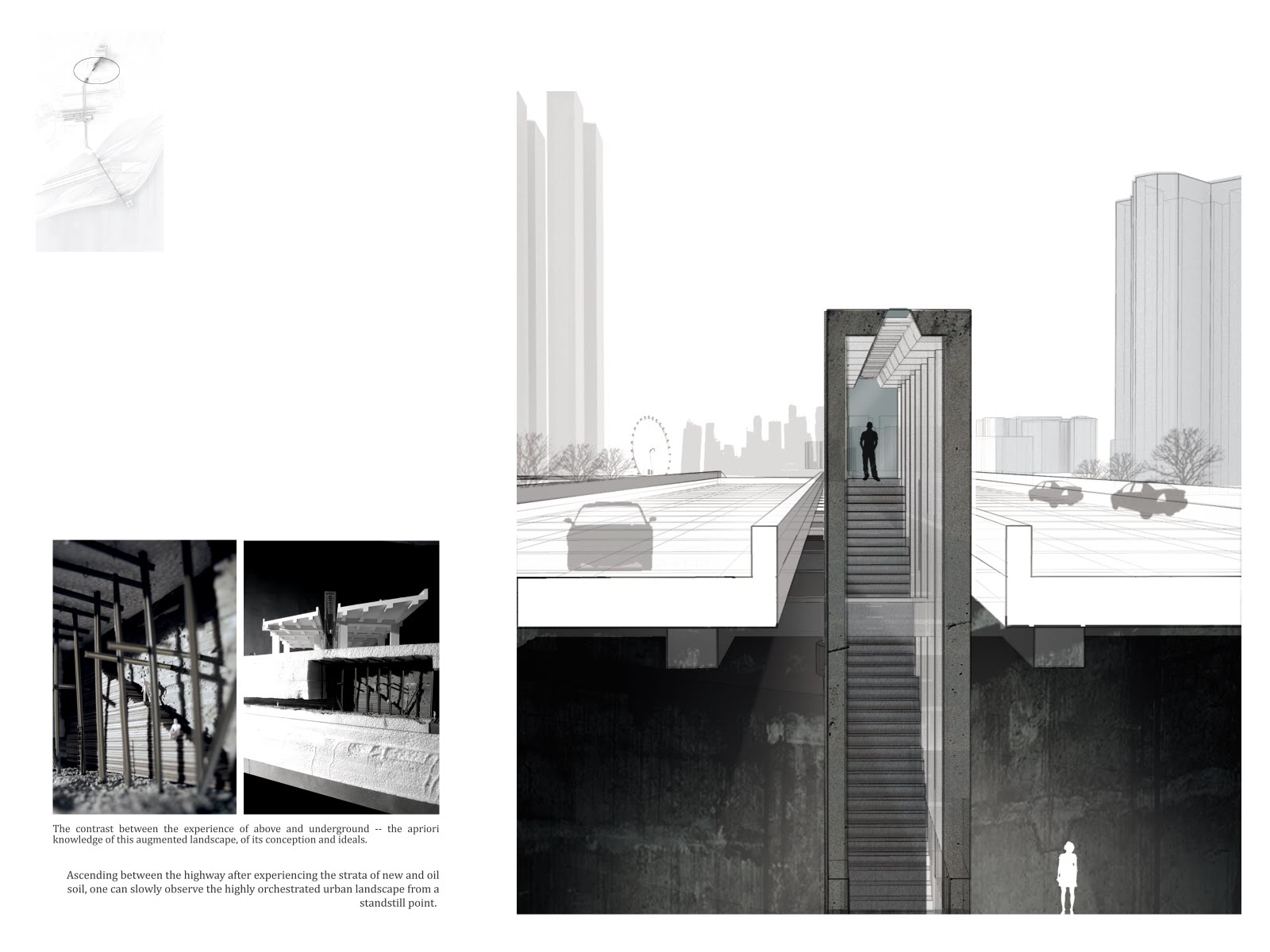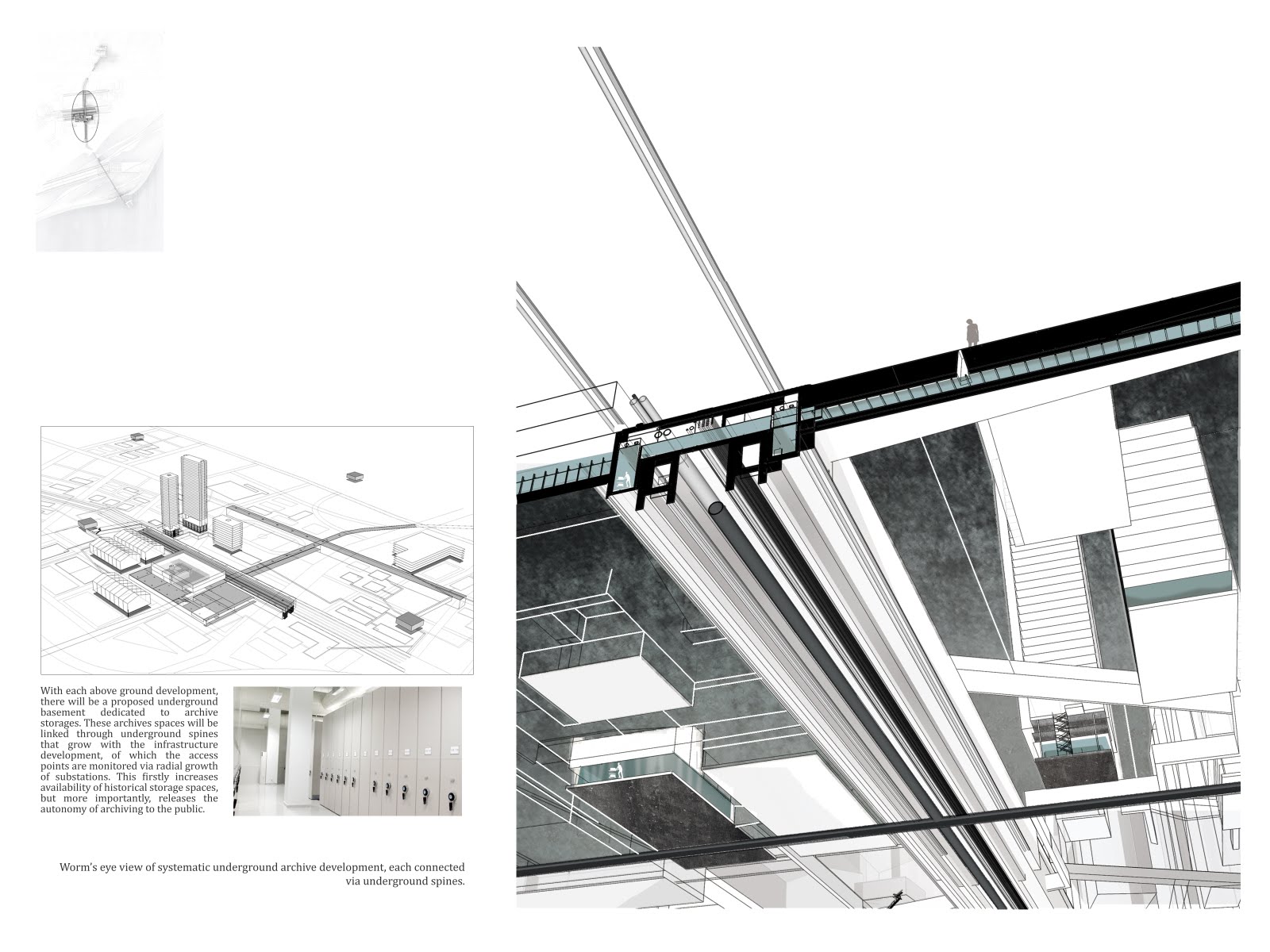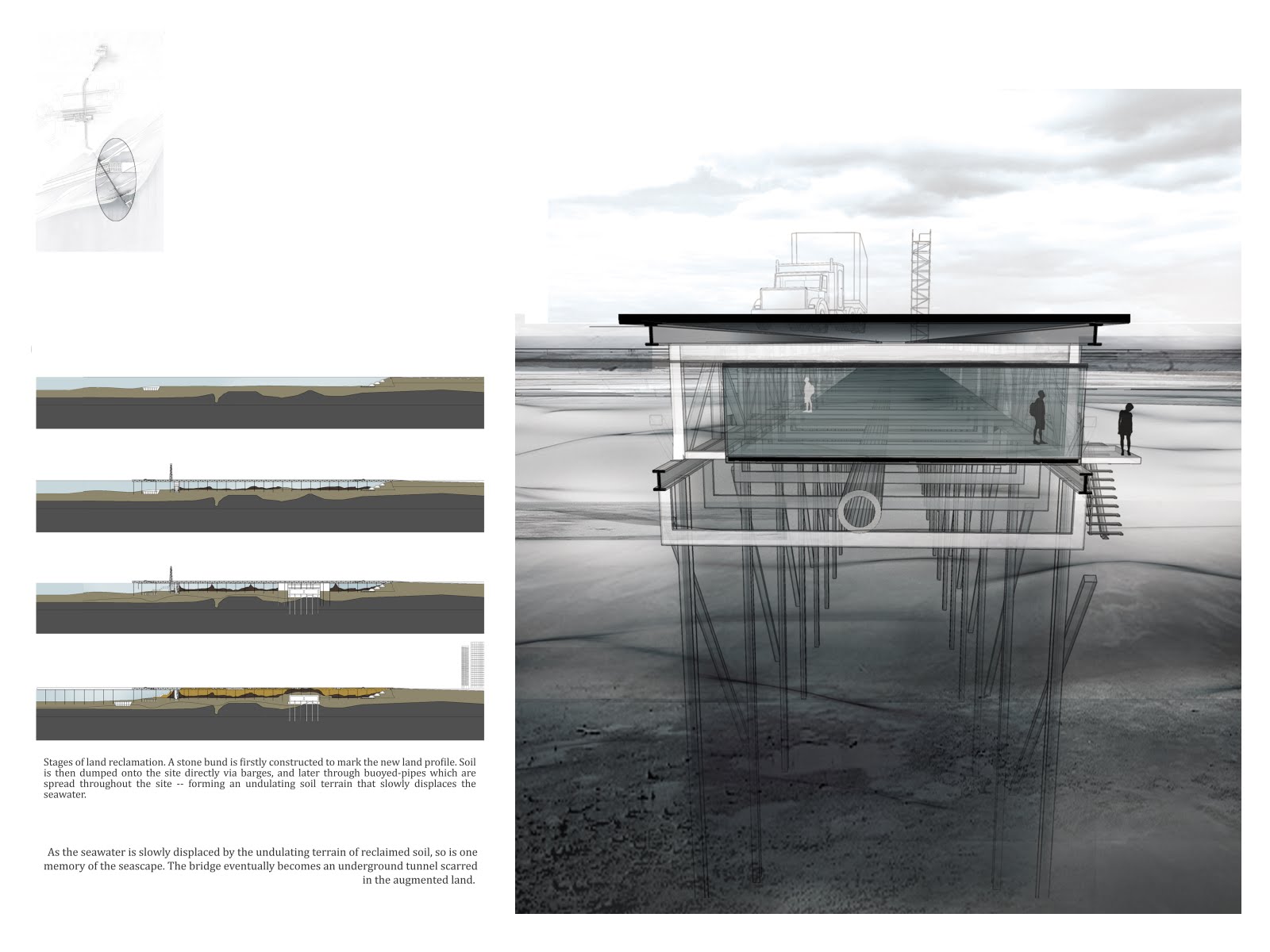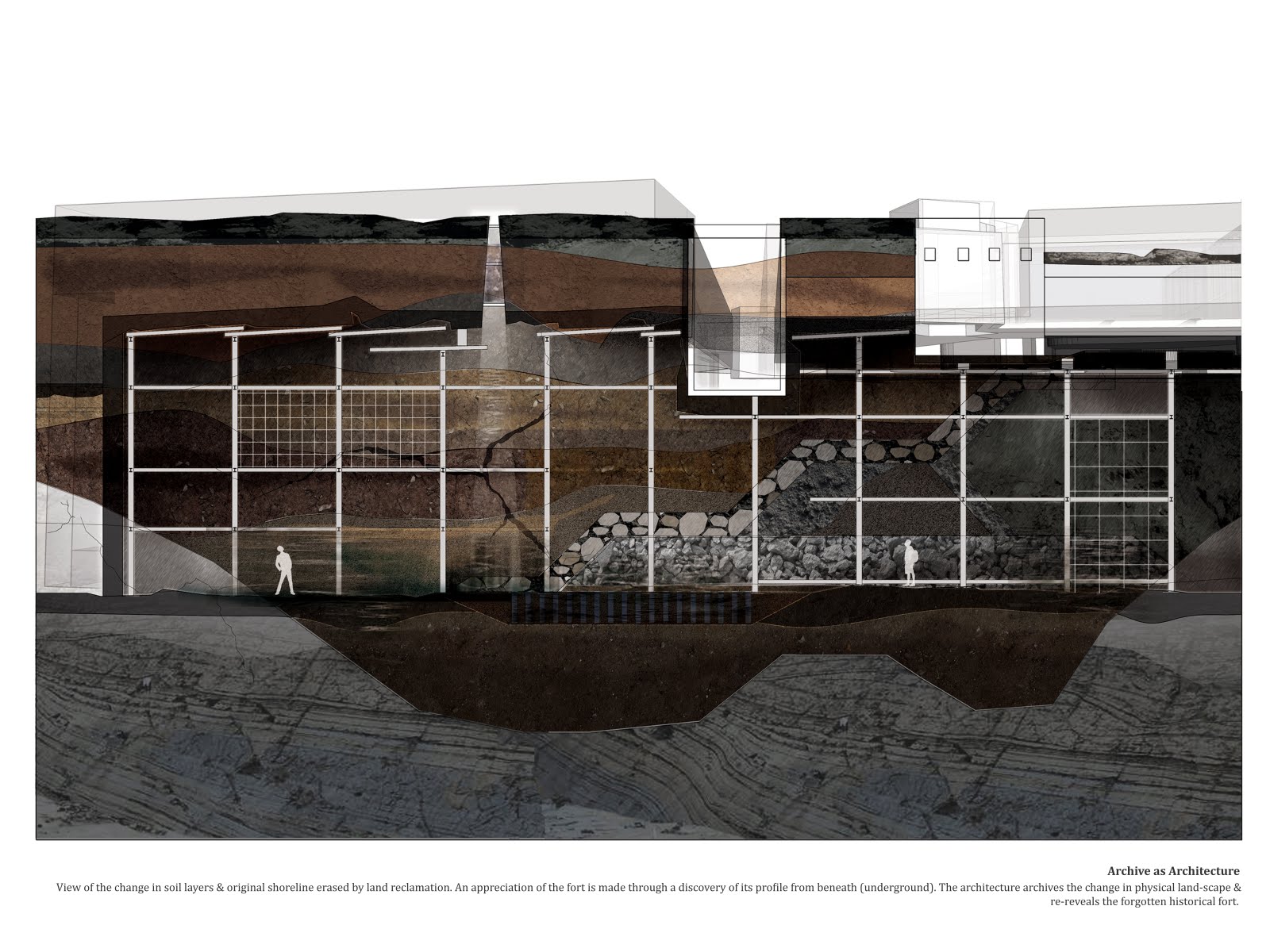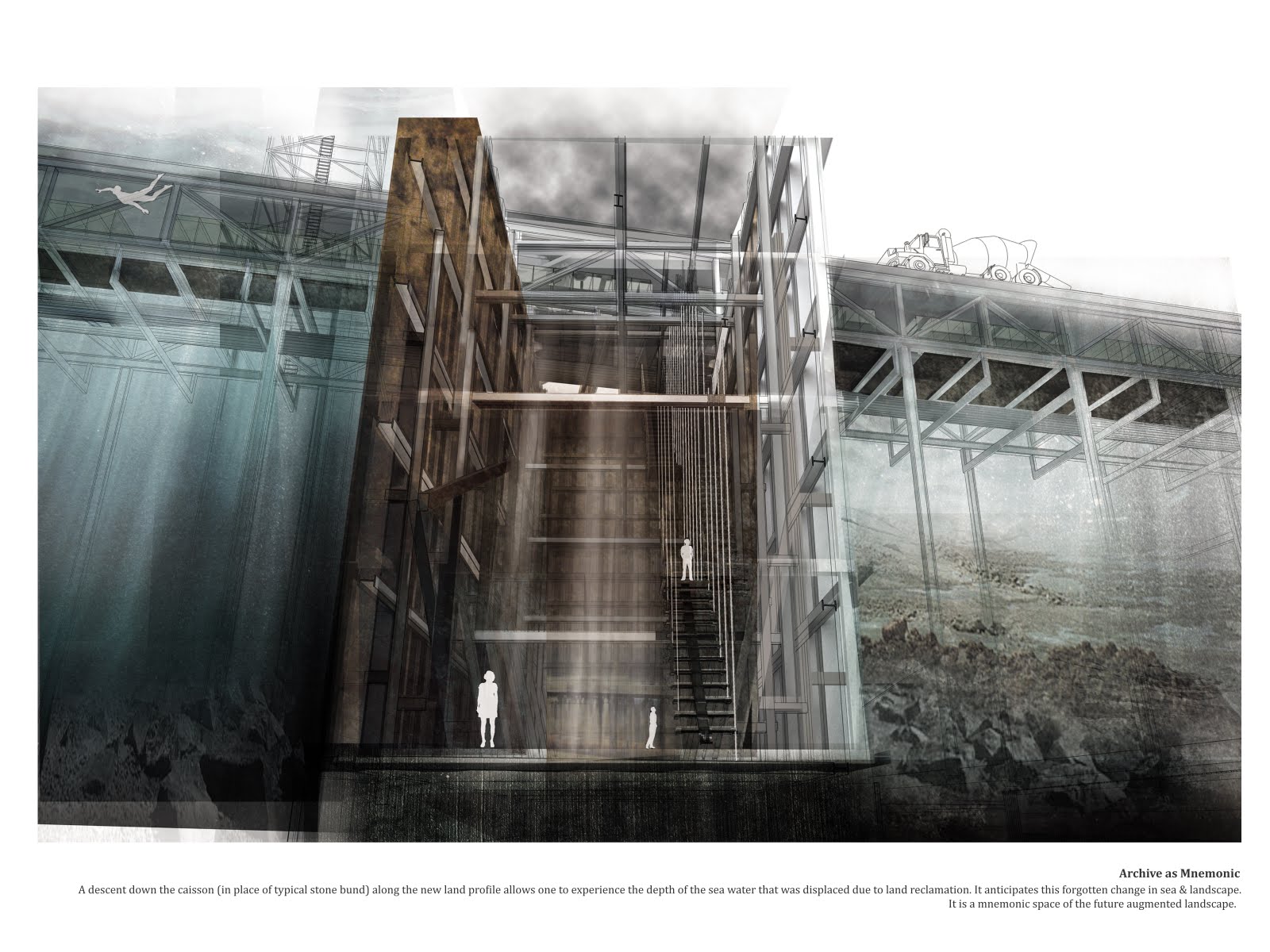"Archiving the Anaesthetised landscape" , the thesis for the Master of Architecture, was nominated by the university for the Royal Institute of British Architects (RIBA) President's Medals Student Awards 2010.
The thesis is a critique on the development of Singapore’s urban development as an anaesthetised landscape. It questions the selective erasure of history and the meaning of land through looking at archivisation from various perspectives.
Singapore, a city and a country, in its aim to be both marketable and idealised, projects a future that constantly displaces the past before the ripening of the present. This often results in a dramatisation and orchestration of the urban landscape – transplanted trees (and now Super Trees), crafted vistas of high-rise living next to beaches and parks by the sea (especially along the expressway from the airport to the city centre) and carefully outlined skyline at the central business district. The ‘real’ is hence compromised; it has become an anaesthetised landscape where selective history, and memory, is kept.
Thus, the archive of Singapore has to be resuscitated, not merely in the form of an entity that documents and expands the autonomy of archivisation, but also a physical body that archives the transformations in the Singapore landscape. It deals with the mode and process of knowing, the physicality of which aims to connect to the real beyond the cosmetic patch up of urban planning. It anticipates a forgetting of a land- seascape displacement during land reclamation. The use of large underground spaces serves to dichotomise the surface and subterranean development; the subterranean archive metaphorically attempts to capture the real. In essence, the project is manifested in three categories: archive as architecture, archive as document, and archive as mnemonic. It continuously expands or destructs, reacting to the changes in landscape and theurbanscape. It will never be complete. It grows, corrodes, extends and destructs.
The site, Marina East, was chosen as it was the first major reclamation project in Singapore that altered the land and coastal profile in a series of phases. Katong Fort that marked the original coastline of Marina East, was as a result, buried, discovered and reburied in what became Katong Park that we see today. The artificial reclaimed land has since been seamlessly stitched into the original landscape, the past conveniently forgotten.
把麻醉化景观存档--- 李慧莲2010
这篇论文是一篇对新加坡城市发展沦为一个麻醉化的景观之批判。通过从多重角度来探讨存档过程,论文就政府对历史所作的选择性消音灭迹以及土地的意义提出疑问。
新加坡既是一个城市又是一个国家。为了成为大有销路和理想化的国家,它所展现的未来,在现时还未成熟之前就不断取代了过去。结果往往造成了市景的过分编剧化和策划,如树木被移植、沙滩和海边公园旁制造高楼住宅景观(特别是从机场到市中心的高速公路沿途)、以及精心设计的中央商业区大楼轮廓线。于是“真实”的被埋没了,市景被麻醉化了,只有某些历史和记忆被选择性的保存下来。
有鉴于此,新加坡的档案库必须复苏,不单是以一个实体的形式来记录和扩张存档的自主权,还必须以一个有形的机制来保存新加坡景观的演变。它须处理求知的方式和过程,而知识的形体则旨在于超越城市计划的表面妆修而连接到真实的事物去。它预料将失去填海期间消失的地上和海上景观的记忆。地下空间的广大使用也使地面和地下发展对分成二。地下的档案隐喻地尝试捕捉真实的。本质上来说,项目显示了三大类: 建筑存档、文件记录存档、以及记忆存档。它不断地扩张或摧毁,对景观和市容的变化作出反应。它永远不能完善。它只能成长、腐蚀、延伸和摧毁。
我选择了滨海东作为题材,因这地区是新加坡首个重大填海工程。经历了一系列的填海阶段之后,本区域的地理和海岸轮廓已完全改观。标志滨海东海岸线原貌的加东堡结果被埋,后来被发现,之后又被埋。这地方今天已发展成加东公园。从此,人工填海地段与原来的景观完美无缝地缝合在一块,使过去被人遗忘。
